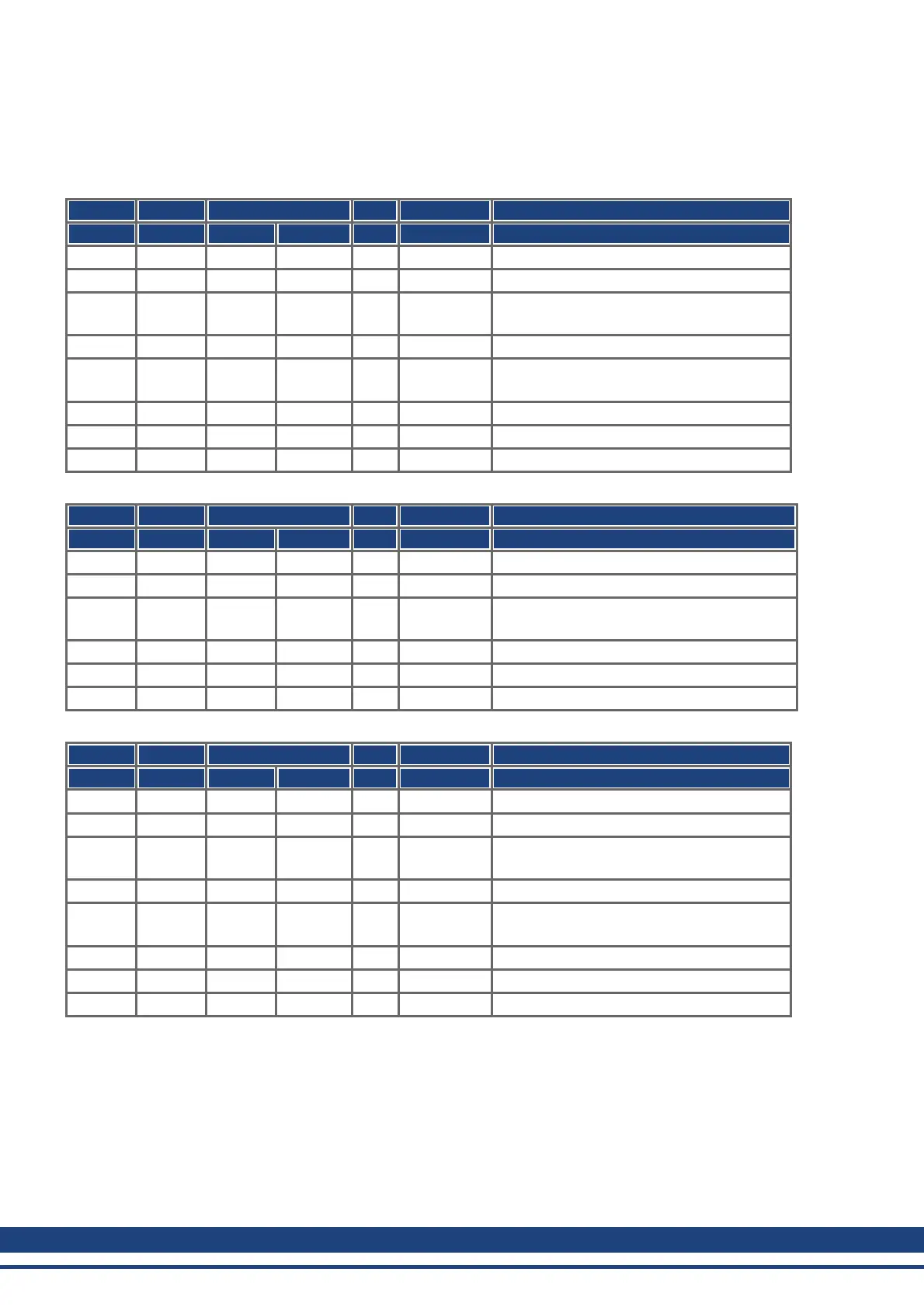AKD CANopen | 8 Appendix
8.2.1.8 Example: Using the Profile Position Mode
This example shows the operation of the Profile position mode. For this, the PDOs are set as follows:
First RPDO. No special mapping necessary, because the default mapping enters the controlword RXPDO1.
Second RPDO
COB-ID Control Index Sub- Data Comment
byte Low byte High byte index
603 2F 01 16 00h 00 00 00 01 RPDO2: delete mapping
583 60 01 16 00h 00 00 00 00 response telegram
603 23 01 16 01h 20 00 7A 60 RPDO2, entry 1:
target_position
583 60 01 16 01h 00 00 00 00 response telegram
603 23 01 16 02h 20 00 81 60 RPDO2, entry 2:
profile_velocity
583 60 01 16 02h 00 00 00 00 response telegram
603 2F 01 16 00h 02 00 00 00 enter number of mapped objects
583 60 01 16 00h 00 00 00 00 response telegram
First TPDO
COB-ID Control Index Sub- Data Comment
byte Low byte High byte index
603 2F 00 1A 00h 00 00 00 01 TPDO1: delete mapping
583 60 00 1A 00h 00 00 00 00 response telegram
603 23 00 1A 01h 10 00 41 60 TPDO1, entry 1:
profile statusword
583 60 00 1A 01h 00 00 00 00 response telegram
603 2F 00 1A 00h 01 00 00 00 enter number of mapped objects
583 60 00 1A 00h 00 00 00 00 response telegram
Second TPDO
COB-ID Control Index Sub- Data Comment
byte Low byte High byte index
603 2F 01 1A 00h 00 00 00 01 TPDO2: delete mapping
583 60 01 1A 00h 00 00 00 00 response telegram
603 23 01 1A 01h 20 00 64 60 TPDO2, entry 1:
position_actual_value
583 60 01 1A 01h 00 00 00 00 response telegram
603 23 01 1A 02h 20 00 6C 60 TPDO2, entry 2:
velocity_actual_value
583 60 01 1A 02h 00 00 00 00 response telegram
603 2F 01 1A 00h 02 00 00 00 enter number of mapped objects
583 60 01 1A 00h 00 00 00 00 response telegram
146 Kollmorgen™ | November 2012

